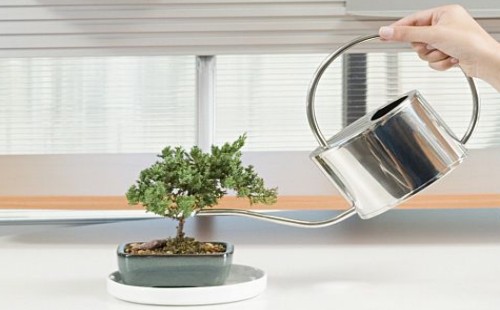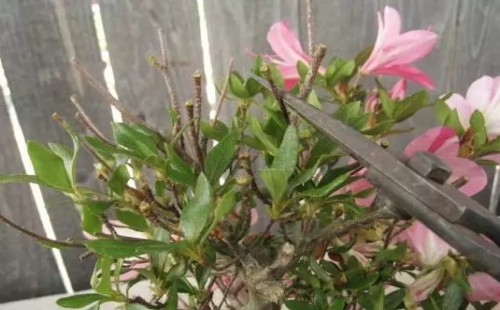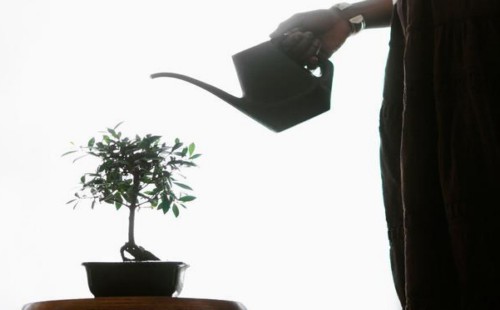How to water bonsai in summer
After entering summer, due to the hot weather and high temperature, especially in the middle of summer, the conservation and management of bonsai has also entered a critical period. It is mainly due to the high light and temperature in summer, the large amount of water evaporation, and watering itself is also a daily work, in such cases, water must be replenished in time, especially for bonsai plants with poor drought tolerance. So, how to water bonsai in summer?

Because the hot weather environment in summer usually exceeds the physiological temperature of bonsai plants, bonsai plants often need to reduce their temperature by evaporating water. But in this process, if bonsai plants often need to absorb a lot of water to maintain this balance, once this balance is broken, the plant will have a variety of adverse symptoms. In order to avoid this situation, we need to replenish bonsai plants in time, but rehydration usually requires mastering four main points:
I. Water quality assurance
Watering bonsai plants is generally more suitable for choosing Rain Water and river pond water, and generally do not use tap water. Especially in the southern region, it is common to plant acidophilic plants, and the requirements for water quality can not be ignored. In the northern region, because the soil is mostly alkaline, and the salinity of river pond water is generally high, it is not suitable to water acidophilic plants. If Rain Water is not harvested in time, then the fermented rice washing water can be diluted and used for watering.
Of course, if it is tap water that has been kept for too long and waste water that has raised goldfish, it can also be used to irrigate plants, but this kind of water is generally only suitable for watering bonsai plants that like neutral or alkaline. If it is fresh tap water, it must not be directly used for watering, after all, there is a large amount of chlorine dissolved in it, which is only harmful to plants after watering, so it needs to be kept for a few days to let the chlorine out fully before it can be used. Alkaline water such as laundry water and chemical wastewater should not be used to irrigate plants.
2. Water temperature guarantee
Due to the high temperature and hot weather in summer, even the temperature in the basin soil often becomes very high, which is often easy to cause a large amount of water evaporation, so the basin soil is easy to dry quickly and needs to be watered in time. But watering must pay attention to control the less water temperature, do not let the water temperature and basin soil temperature form too big contrast, otherwise it is easy to have a huge temperature change after watering and cause damage to the root system of the plant. When watering in summer, you should first move the flowerpot to a cool place and not water it in the hot sun; at the same time, you should avoid watering the highest temperature of the day, mostly before 9: 00 a.m. or after 4: 00 p.m., and require the water temperature to be basically consistent with the temperature of the potted soil as far as possible, so as to avoid damage to the roots of bonsai plants.
Third, look at the sky watering
Summer generally needs to be watered once a day in the morning and evening, but watering should pay attention to control the rhythm, do not use flood irrigation, but let the water soak the basin soil. At the same time, in addition to watering, should also be sprayed several times in the morning and evening, not only to spray foliar water, but also need to spray basin, ground to cool and moisturize. Properly increasing air humidity can prevent bonsai plants from drying up branches and leaves, yellow leaves, scorched leaves, fallen leaves and other phenomena. However, if it is a continuous rainy day, indoor bonsai can reduce the frequency of watering and spraying; if it is outdoor bonsai, there is generally no need for watering and spraying, and timely drainage and waterlogging prevention measures are needed to avoid retting and rotting roots caused by stagnant water in the basin.
Fourth, watering due to the basin
The watering of bonsai plants in summer should not only grasp the main points of the above three aspects, but also need to be watered scientifically according to flowerpots and plant species. If the basin is small and planted shallow root bonsai plants, the frequency of watering and spraying is often higher; if the basin is large and deeply planted bonsai plants, due to the deep soil in the basin, the watering frequency often needs to be reduced.
And the material of the flowerpot used also has a certain relationship with the frequency of watering, usually the flowerpot with good water permeability, the pot soil is easier to dry, so the watering frequency is higher, and the amount of water is also larger; if it is a flowerpot with poor water permeability, such as ceramic and plastic pots, the water evaporation in the pot is often slower, so the watering frequency and water quantity should be controlled accordingly.
Time: 2019-06-06 Click:
- Prev

Pruning methods of summer cuckoo bonsai
Summer rhododendron, a kind of rhododendron that blossoms in summer, has relatively small branches and leaves, but many branches, round crown, various flowers and rich colors, so it is a good material for making bonsai. However, if you want the summer cuckoo bonsai to bloom as scheduled while maintaining the perfect plant shape, the pruning work must be done well.
- Next

Matters needing attention for watering bonsai in summer
Summer is often difficult for human activities. After all, the temperature is high, the weather is hot, and the human body consumes a lot. Not only that, even bonsai plants are often affected by hot weather and often have a variety of poor growth.
Related
- Fuxing push coffee new agricultural production and marketing class: lack of small-scale processing plants
- Jujube rice field leisure farm deep ploughing Yilan for five years to create a space for organic food and play
- Nongyu Farm-A trial of organic papaya for brave women with advanced technology
- Four points for attention in the prevention and control of diseases and insect pests of edible fungi
- How to add nutrient solution to Edible Fungi
- Is there any good way to control edible fungus mites?
- Open Inoculation Technology of Edible Fungi
- Is there any clever way to use fertilizer for edible fungus in winter?
- What agents are used to kill the pathogens of edible fungi in the mushroom shed?
- Rapid drying of Edible Fungi

